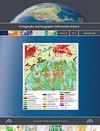人口缩减使用高分辨率,时间丰富的美国房地产数据
IF 2.4
3区 地球科学
Q1 GEOGRAPHY
Cartography and Geographic Information Science
Pub Date : 2021-11-16
DOI:10.1080/15230406.2021.1991479
引用次数: 8
摘要
在人口统计学、城市规划、灾害预防、经济和环境建模等许多领域,时序和空间明确的人口数据都是至关重要的。这些研究中使用的人口数据通常是在人口普查枚举单位汇总的,这对于许多应用来说过于粗糙。为了获得更精细的空间分辨率的人口数据,需要精确的人口降尺度方法。我们使用一个新的定居相关数据库,即美国历史定居数据汇编(HISDAC-US)中的建筑财产记录(BUPR),将人口从人口普查区缩小到街区群体。BUPR数据集提供了美国大部分地区(CONUS)从1810年到2015年的5年时间分辨率下,每个250米网格的建筑属性记录数量。通过与其他常用的辅助数据集进行比较,BUPR将人口从人口普查区缩小到代表人口密度范围的四个州的块组的能力进行了评估。基于BUPR的方法在除一个高度不完全BUPR状态外的所有状态下都优于其他所有方法。通过将每个州划分为低、中、高人口密度类别,可以进行更详细的准确性评估。BUPR方法在中低密度类别中产生更准确的降尺度种群估计,但由于其相对粗糙的空间分辨率,其在高密度类别中的性能会下降。基于bupr的非对称映射随后应用于CONUS,发现其泛化程度远远超出了四种比较状态,具有很高的降尺度精度。HISDAC-US数据集的长期记录使得可以构建追溯到1810年的细粒度人口数据。本文章由计算机程序翻译,如有差异,请以英文原文为准。
Population downscaling using high-resolution, temporally-rich U.S. property data
ABSTRACT Multi-temporal and spatially explicit population data are vital in many fields, such as demography, urban planning, disaster prevention,economics, and environmental modeling. Population data used in these studies are typically aggregated at census enumeration units, which are too coarse for many applications. Accurate population downscaling methods are needed to obtain population data at finer spatial resolutions. We use a novel settlement-related database, Built-Up Property Records (BUPR) from the Historical Settlement Data Compilation for the United States (HISDAC-US) to downscale population from census tracts to block groups. The BUPR dataset provides the number of built-up property records for each 250-m grid at 5-year temporal resolution from 1810 to 2015 for most contiguous United States (CONUS). The ability of BUPR to downscale population from census tracts to block groups for four states, representing a range of population densities, is evaluated here by comparing against other commonly-used ancillary datasets. The BUPR-based method outperforms all other methods in all but one state with highly-incomplete BUPR. A more detailed accuracy assessment is performed by dividing each state into low, medium, and high population density categories. The BUPR method produces more accurate downscaled population estimates for low and medium categories, though its performance deteriorates in the high density category due to its relatively coarse spatial resolution. BUPR-based dasymetric mapping is subsequently applied to the CONUS and found to generalize well beyond the four comparison states with high downscaling accuracy. The long-term record of the HISDAC-US dataset enables the potential construction of fine-grained population data back to 1810.
求助全文
通过发布文献求助,成功后即可免费获取论文全文。
去求助
来源期刊
CiteScore
5.20
自引率
20.00%
发文量
23
期刊介绍:
Cartography and Geographic Information Science (CaGIS) is the official publication of the Cartography and Geographic Information Society (CaGIS), a member organization of the American Congress on Surveying and Mapping (ACSM). The Cartography and Geographic Information Society supports research, education, and practices that improve the understanding, creation, analysis, and use of maps and geographic information. The society serves as a forum for the exchange of original concepts, techniques, approaches, and experiences by those who design, implement, and use geospatial technologies through the publication of authoritative articles and international papers.

 求助内容:
求助内容: 应助结果提醒方式:
应助结果提醒方式:


